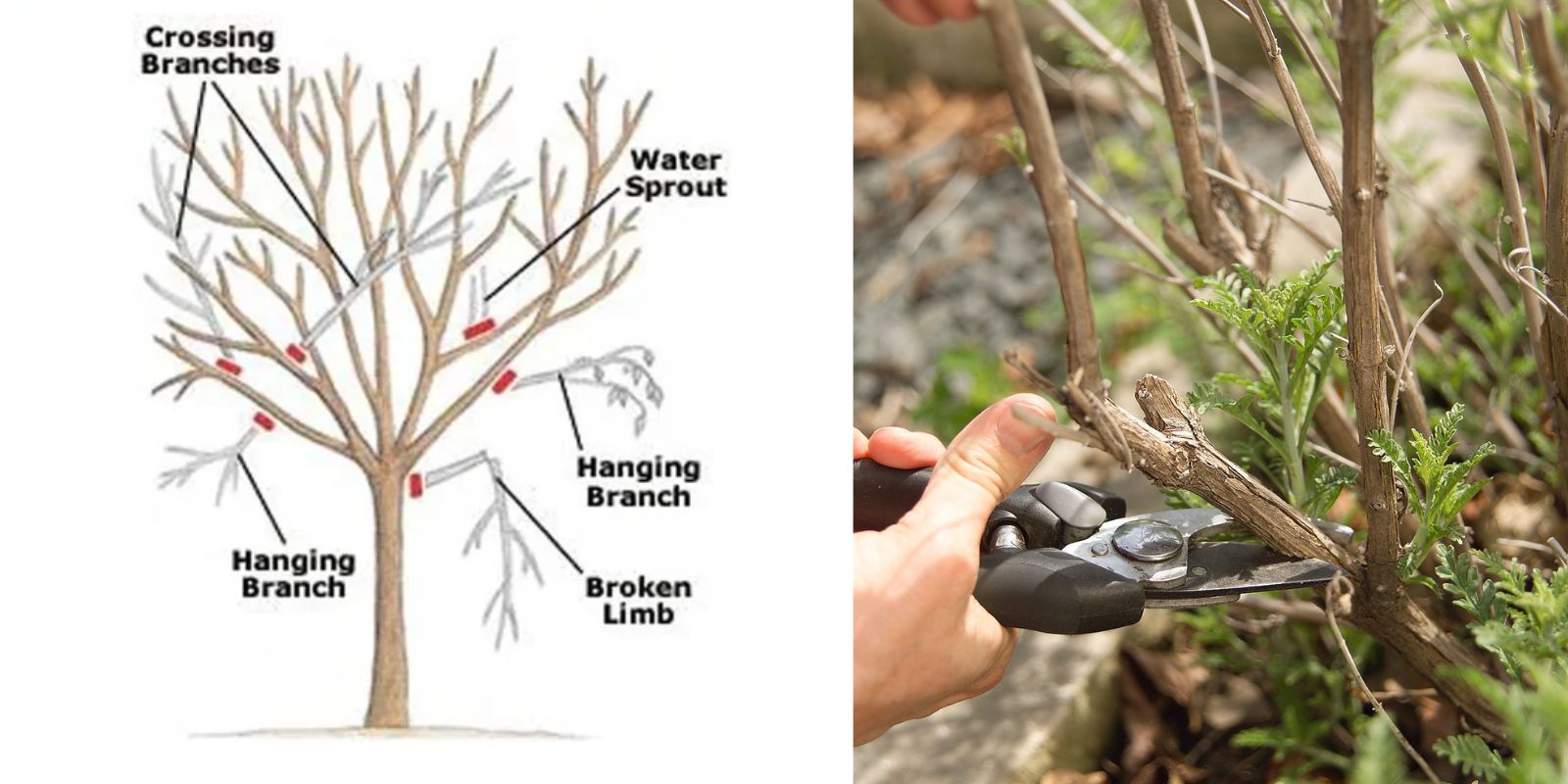Pruning is one of the most rewarding practices for gardeners, ensuring trees and shrubs remain healthy, beautiful, and productive. Whether you’re shaping an ornamental bush, rejuvenating a fruit tree, or simply removing dead branches, knowing how and when to prune can make all the difference. In this guide, we’ll dive deep into pruning techniques, timing, and tips to help your garden flourish.
Why Prune Trees and Shrubs?
Pruning offers multiple benefits:
- Health and Vigor: Removing dead or diseased wood helps prevent pests and diseases, allowing plants to grow stronger.
- Improved Aesthetics: Pruning maintains the natural shape of your plants, enhancing your garden’s overall look.
- Increased Productivity: For fruiting trees and shrubs, pruning encourages the growth of new, fruitful branches.
- Safety: Removing weak or overhanging branches reduces the risk of damage during storms or windy conditions.
When to Prune Trees and Shrubs
Timing is everything when it comes to pruning. The right season depends on the type of tree or shrub and your pruning goals.
- Dormant Pruning (Late Winter to Early Spring):
- Most deciduous trees and shrubs are best pruned during their dormant phase.
- Benefits: Easy to see the plant’s structure, reduced risk of sap loss, and minimal pest activity.
- Ideal for: Maples, oaks, fruit trees (like apples and pears), and many flowering shrubs.
- Post-Bloom Pruning (Spring and Summer):
- Prune flowering shrubs like lilacs, forsythias, and azaleas right after their blooms fade.
- Benefit: Prevents cutting off next year’s flower buds.
- Light Pruning (Throughout Growing Season):
- Minor shaping or deadheading can be done during active growth. Avoid heavy pruning in mid-summer, as it can stress the plant.
- Avoid Late Fall Pruning:
- Pruning in late fall can stimulate growth just before winter, leaving plants vulnerable to frost damage.
Tools for Pruning
Using the right tools makes pruning easier and ensures clean cuts, reducing stress on your plants.
- Pruning Shears: Best for small branches and fine trimming.
- Loppers: Ideal for cutting medium-sized branches.
- Pruning Saws: Useful for larger, thicker branches.
- Gloves and Safety Gear: Protect your hands and eyes while working.
- Sanitizer: Clean your tools before and after pruning to prevent spreading diseases.
How to Prune Trees and Shrubs: Step-by-Step Guide
- Inspect the Plant:
- Look for dead, diseased, or damaged branches that need removal.
- Identify overcrowded or inward-growing branches that hinder air circulation.
- Start with Deadwood Removal:
- Cut off any dead or diseased branches first.
- Use a clean, sharp tool to make cuts just above healthy wood.
- Thin Out Overgrowth:
- Remove crossing or rubbing branches to prevent wounds and improve airflow.
- Maintain a balanced shape by evenly thinning branches.
- Shape the Plant:
- Follow the natural growth pattern of the tree or shrub.
- Avoid over-pruning, as it can stress the plant and reduce its vigor.
- Focus on Buds and Branch Angles:
- Always cut just above a bud that faces outward to encourage healthy, outward growth.
- Make cuts at a slight angle to prevent water from collecting on the wound.
- Limit Cuts to No More Than 25%:
- Removing too much at once can weaken the plant. Gradual pruning over several seasons is safer.
Pruning Tips for Specific Plants
- Fruit Trees:
- Prune in late winter for structure and to remove suckers (vertical shoots).
- Focus on opening up the canopy for better sunlight penetration.
- Flowering Shrubs:
- For spring bloomers, prune immediately after flowering.
- For summer bloomers, prune in late winter or early spring.
- Evergreens:
- Light pruning can be done anytime to maintain shape.
- Avoid cutting into old wood, as many evergreens cannot regrow from it.
- Roses:
- Remove dead or weak canes in late winter.
- Cut back hybrid teas and floribundas to encourage strong blooms.
Common Pruning Mistakes to Avoid
- Over-Pruning:
- Cutting too much can stress the plant and reduce growth.
- Cutting Too Close to the Bud:
- Avoid cutting too close to a bud or branch collar, as it can damage the plant.
- Topping Trees:
- Cutting off the top of a tree disrupts its natural growth and creates weak branches.
- Pruning at the Wrong Time:
- Timing is crucial to avoid removing flower buds or stressing the plant during active growth.
Post-Pruning Care
- Clean Up Debris:
- Collect and dispose of all pruned material to prevent pest and disease buildup.
- Monitor for Pests and Diseases:
- Check the plant regularly to ensure it’s recovering well.
- Fertilize and Mulch:
- Provide nutrients and moisture to help the plant recover and grow.
- Keep Tools Maintained:
- Sharpen and sanitize tools after use to keep them in top condition.
The Art of Pruning: Final Thoughts
Pruning is both a science and an art. By learning the proper techniques and timing, you can transform your garden into a thriving, vibrant space. The rewards of pruning go beyond aesthetics—it contributes to the health and longevity of your plants, ensuring they remain productive and beautiful for years to come.
Motivational Call-to-Action:
Ready to take your garden to the next level? Grab your tools and start pruning today! Share your progress and tips in the comments below. Let’s grow together! 🌱🌳
#PruningTips #HealthyPlants #GardeningHacks #TreeCare #ShrubCare #GreenThumbGoals #GardenLife #GrowWithLove

